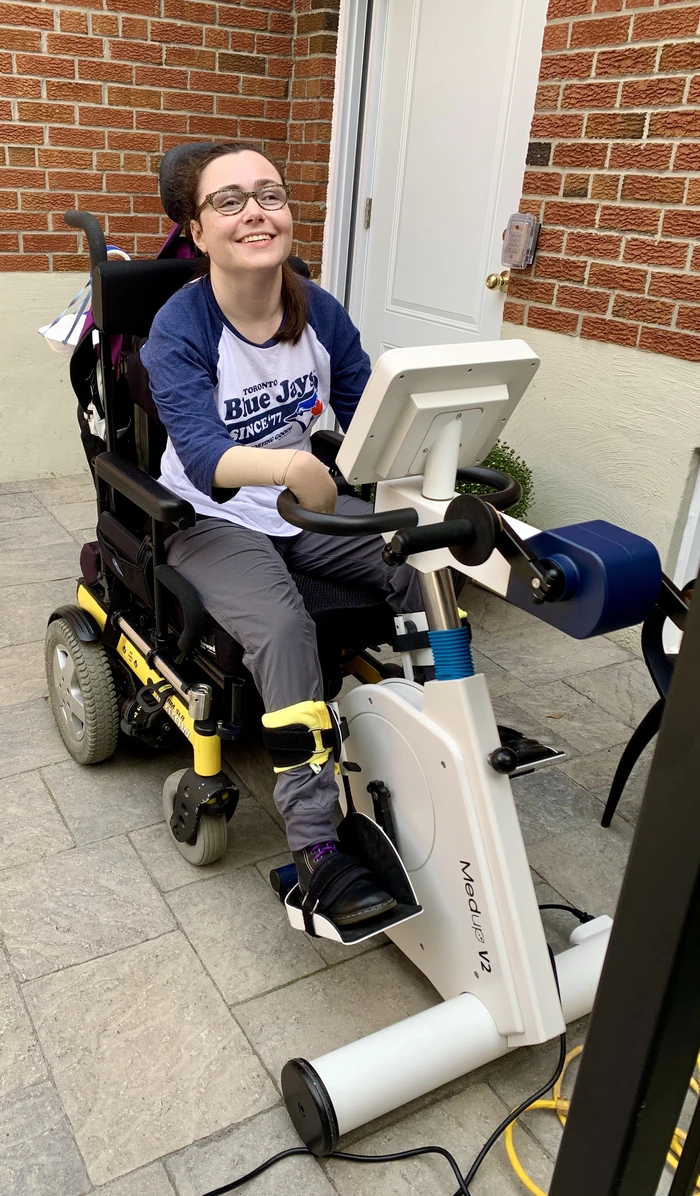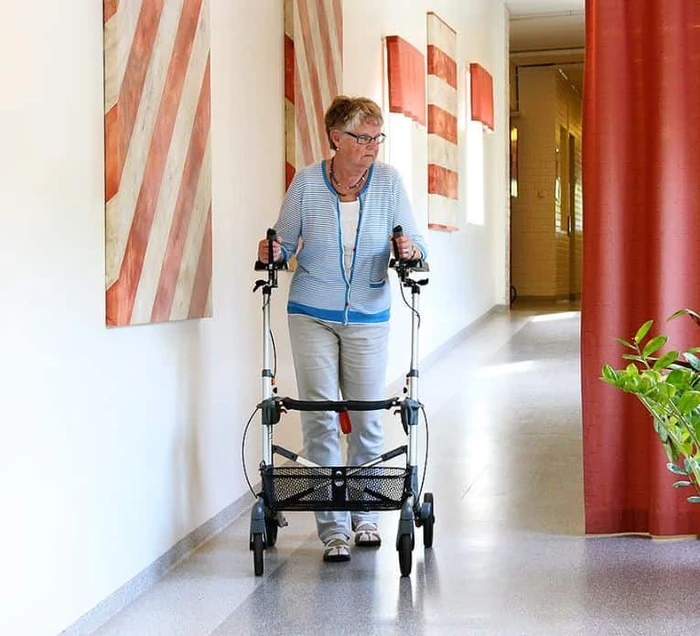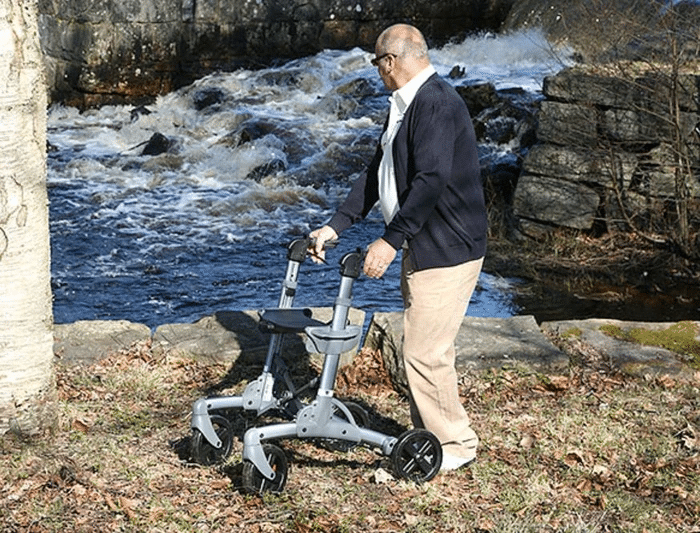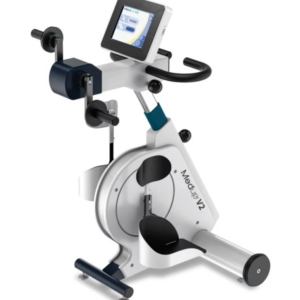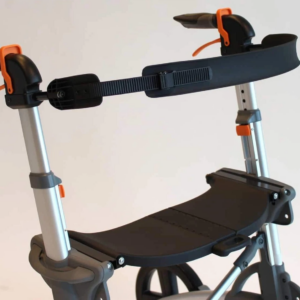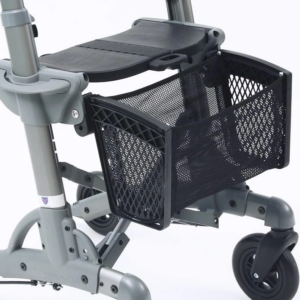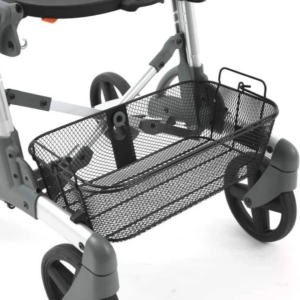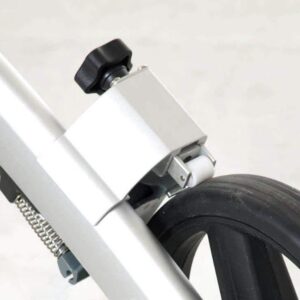When someone reaches the point where walking unassisted becomes difficult or even impossible to do, it can be overwhelming to try to find the right solution for them. With so many walker choices available to them it is hard to know exactly which one to choose. Rollator walkers are an option that come with the most customizable options and will suit the largest variety of needs.
Benefits of a Rollator Walker
There are many benefits of a rollator walker that make it the option that fills the largest variety of needs. Thanks to many unique features, rollator walkers are a great solution for many people looking for support while walking. Rollator users enjoy these 10 beneifts:
Did you know? Rollators by Volaris are designed to help seniors move more freely and safely. Our customers love sharing first-hand accounts of life-changing benefits. See their testimonials!
1. You can go further
Because a rollator walker comes with a built-in seat, you can go further when you use it. Being able to sit down and rest any time you need to allows you to pause and catch your breath as often as you like.
2. They are easier to use
With 4 wheels on a rollator walker, the unit is easy to use and maneuver so that even a weaker rollator user can use it effectively.
3. A rollator is easy to turn
The 4 wheels on a rollator walker make it very easy to turn and maneuver, especially in narrow areas. The built-in hand brakes are an important safety feature on the rollator walker, so there are no worries about the walker rolling away from the user.
4. It doesn’t require lifting
Because the rollator walker has wheels on the legs rather than just straight ends, it doesn’t need to be lifted in order to take a step forward. Weaker users will have an easier time moving forward because they can just push it forward rather that having to lift it with each step. This is also more ideal for those who struggle with balance issues, since they won’t have to maintain balance each time they lift the walker.
5. You won’t get as tired
With a built-in seat, height adjustable handlebars and wheels that don’t require the walker to be lifted to take a step, the rollator user won’t get as tired as they may have with a standard walker. A rollator walker is often lighter than a standard walker as well.
6. There are compact options
While standard walker sizes don’t vary too much, there are multiple sizes of rollator walkers. You can choose a compact model if you need to use your walker in tight areas or to go around corners often. This allows the walker to be more versatile for your needs. It is also possible to go for a more lightweight model, especially if you will be moving your walker in and out of your vehicle or up and down stairs often.
7. A rollator walker can fold up for transportation
While a standard walker can often also fold up, the rollator walker usually offers a smaller and more compact folded version.
8. You can get both indoor and outdoor models
The wheels on a rollator walker can be customized based on the intended use. If the user will spend more time outside in grass, sand or other harder to navigate terrain, larger wheels make this easier to do. On the other hand, if the walker will only be used inside the user can choose wheels that will offer a more compact profile that won’t scuff up floors.
9. Rollator Walkers Have More Features
A wheeled rollator walker comes with many features that a regular walker doesn’t have. The features on a rollator walker make it much easier and more versatile to use, making it a great option for many users.
Wheeled Walker
- Built-in seat
- Wheels on the legs
- Easy to use handle brakes
- Adjustable height so the user can remain upright rather than hunched over
- Large wheels for outdoor use
- Handles sit below the user rather than in front of them, offering better support
Regular Walker
- No seat
- No wheels, just straight legs
- No brakes needed
- Adjustable height
- Wider frame, making it harder to hold on to
10. Rollators Encourage Activity for Better Health
For all of the reasons above, having a high quality rollator that is easy to use and that allows greater mobility encourages users to get more active. Greater activity – for seniors or at any age – promotes better fitness and health. This also improves users’ mindset – with an attitude that they CAN do more, see more, and live better!
Rollator Walkers are a Great Choice
For many walker users, a rollator walker is the best choice they can make. The many features combined with the easy to use frame make it an obviously great option. With the needs of users varying quite a bit and changing over time, a rollator walker can grow and change with the user making it a more dynamic and adjustable walker. The portability and maneuverability of a rollator walker just can’t be beat!

